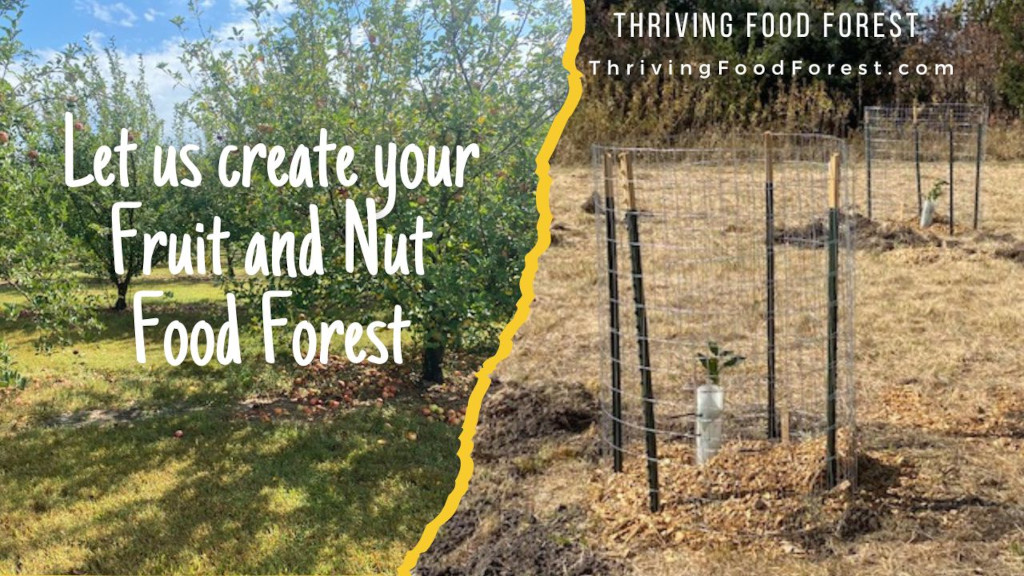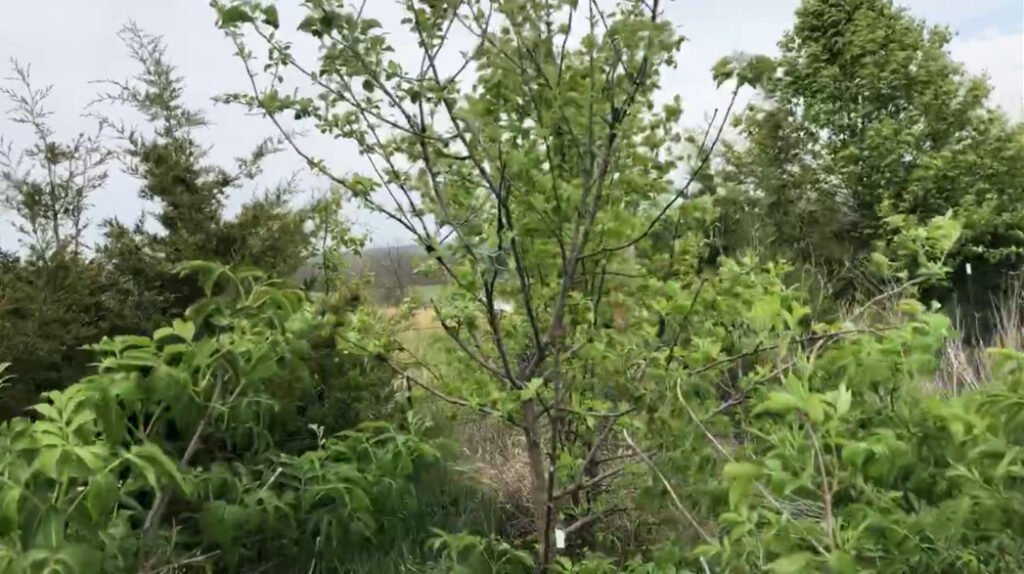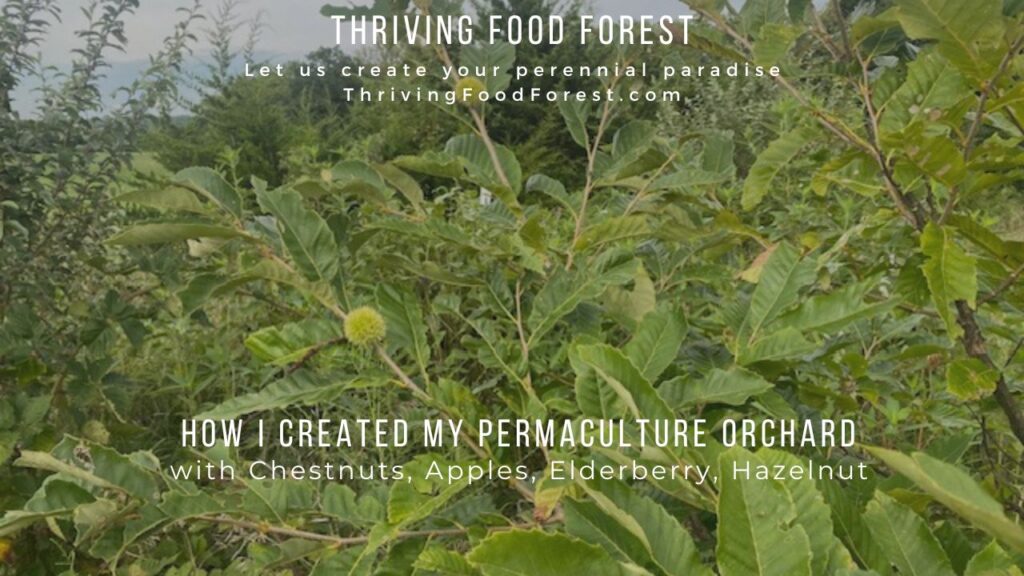A Food Forest Success Story
Our Client’s Overall Goal: Plant fruit and nut trees and shrubs which produce as much food as possible with low maintenance.
To accomplish this goal, this design included planting trees and shrubs on the lower pasture area – about 2-3 acres along the access to the driveway.
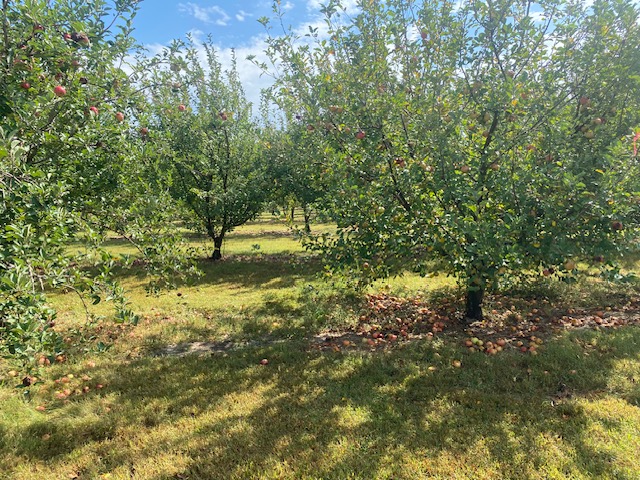
Specific goals:
The landowner would like the design to include 2/3 fruit trees/shrubs and 1/3 nut trees/shrubs.
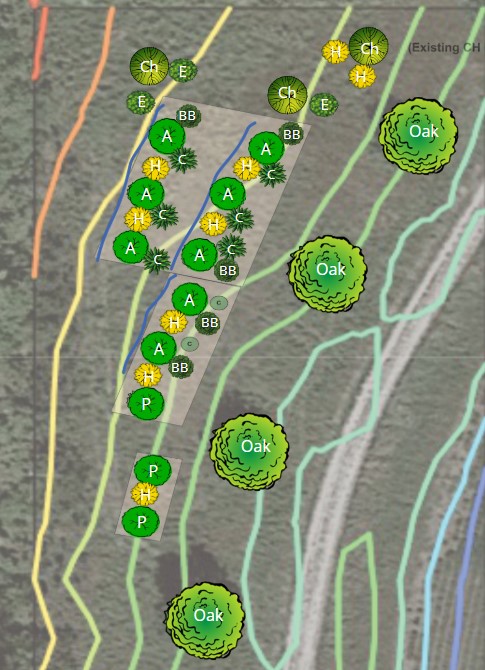
Types of trees and shrubs in the design:
- Trees: Chestnut, apple, pear, pecan. Integrate the existing chestnut into the design.
- Shrubs: Hazelnut, elderberry, bush cherries, and thornless blackberry.
Property walk and assessment
This property is forty acres in NE Kansas.
USDA growing Zone 6B.
The goal is to plant trees and shrubs on the lower pasture area – about 2-3 acres along the access to the driveway.
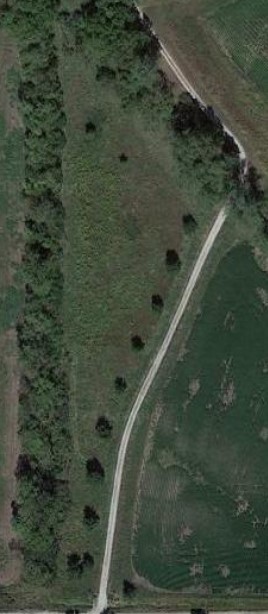
Burr Oak trees line the driveway, each about 60 feet apart. There are two Burr Oak trees in the North end of the pasture.
Just North of the 6th Oak tree there is an existing Chinese chestnut tree, in a cage (because of deer pressure). The tree is about 6-8 feet tall. It does not have nuts because there are no other chestnuts to pollinate it (and chestnuts do not self-pollinate).
Limiting factors:
The desire was to keep it as much of an “orchard look” as possible.
In NE Kansas we do not have “April showers bring May flowers.” Instead, it rains huge thunderstorms in May and June.
The pasture does not have water infrastructure (frost-free hydrant or other water).
Because of this rainfall pattern and the lack of water infrastructure in the pasture, it will be necessary to capture, or “plant” water in the ground. Therefore, I recommended installing swales, with trees planted into the berms.
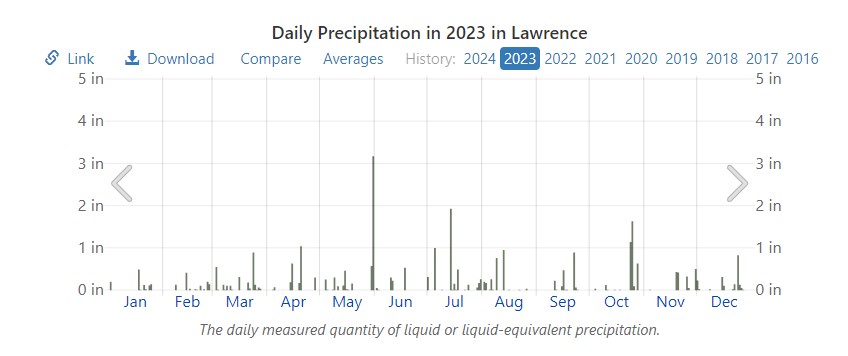
The hedgerow along the West side of the pasture has some Cedar trees, so the apple varieties chosen will need to be Cedar Apple Rust and disease resistant.
Contour Map of the Pasture
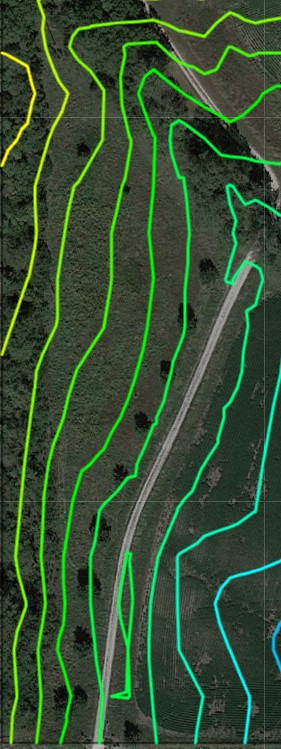
The pasture has a 4% slope, that is mostly toward the East. The main planting area slopes more to the Southeast.
Implementation – Let’s Do This!
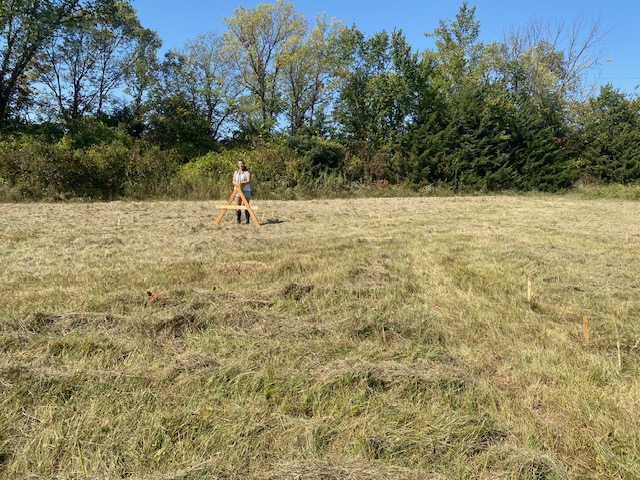
Because there is no water infrastructure in the pasture, it was necessary to create swales and plant the trees into the downhill berm. Wood chips and heavy mulching. Including comfrey to add nitrogen accumulator to the apples.
The design included 160 feet of swales – one swale 60 feet and the other swale 100 feet.
I used a mini-excavator to dig the swales, form the berms, and dig holes for the trees.
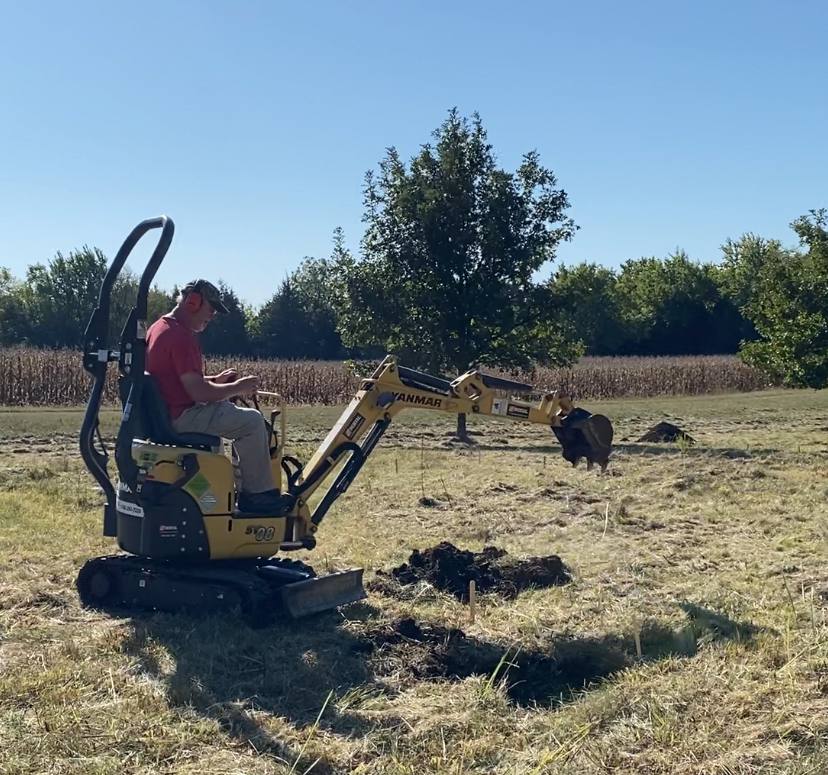
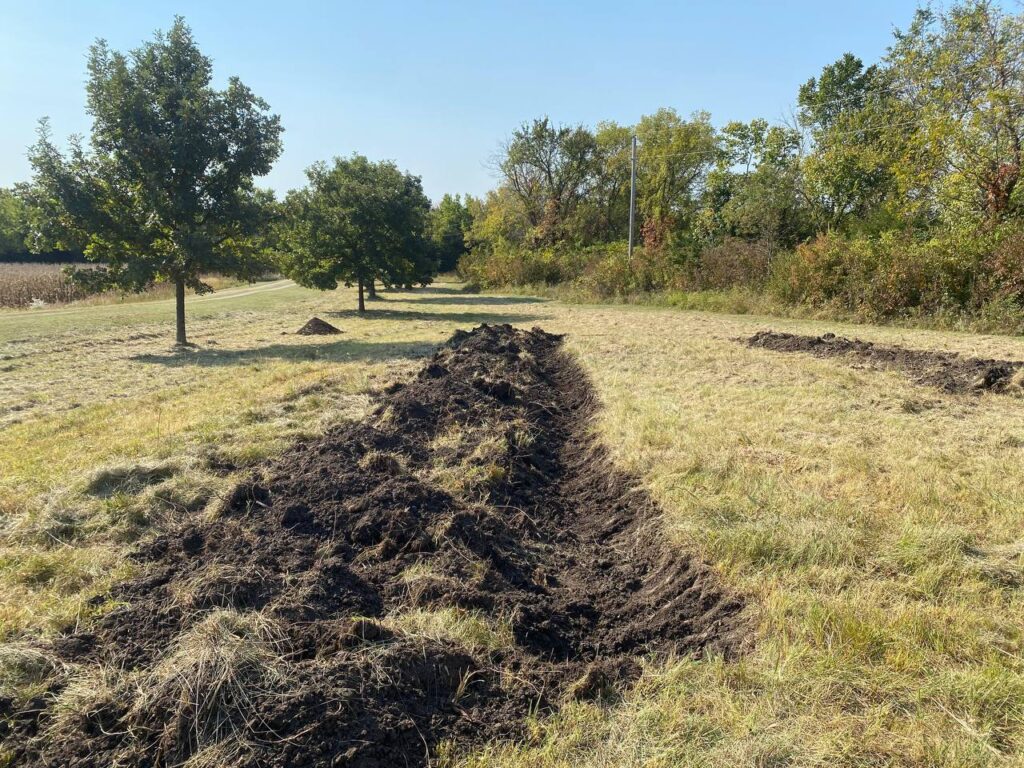
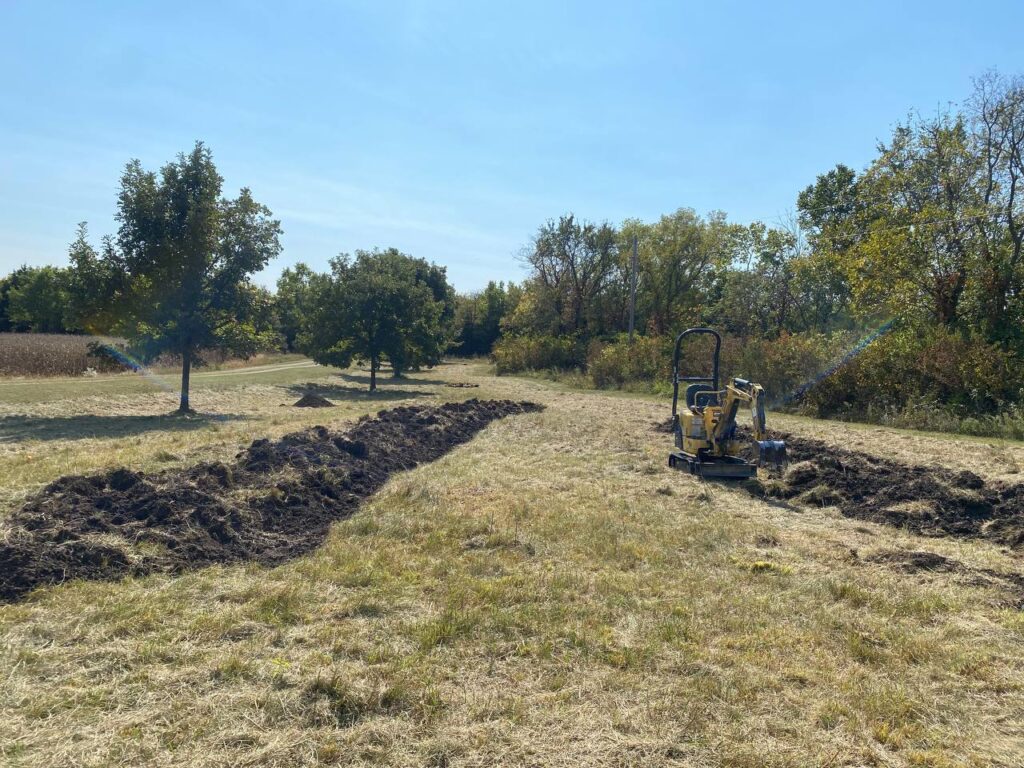
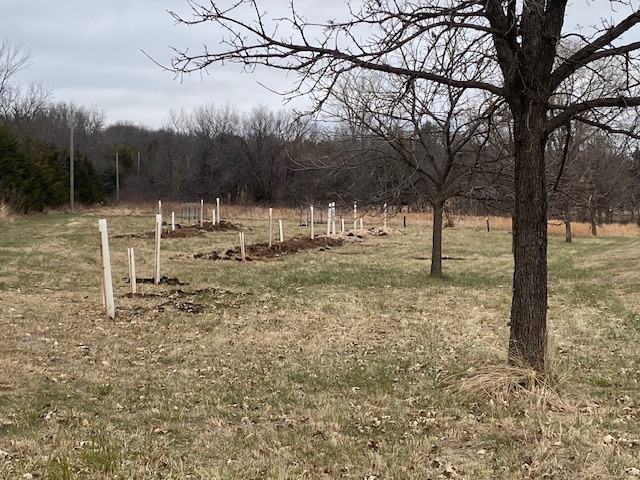
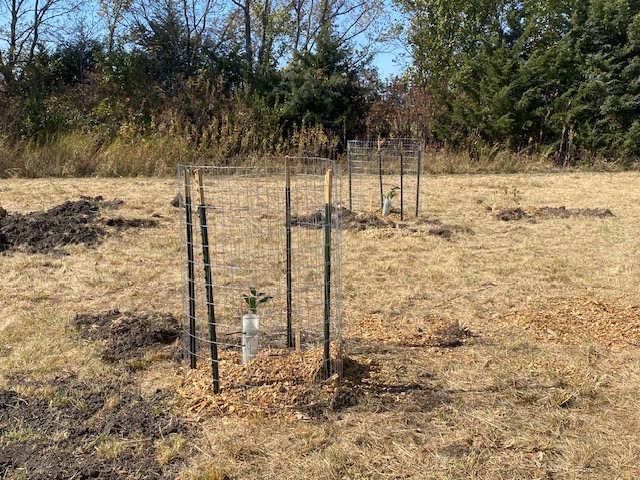
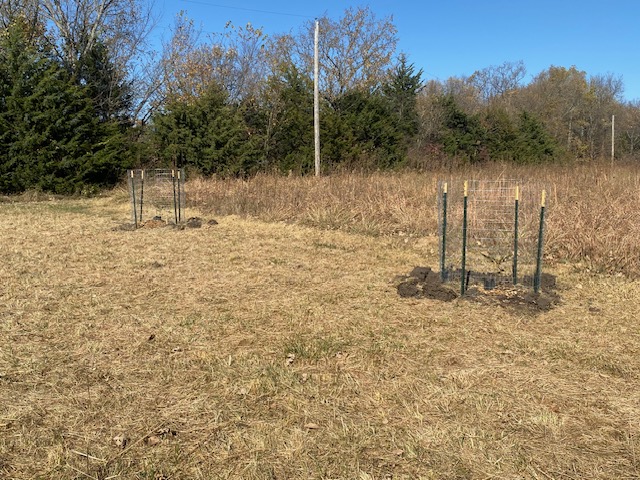
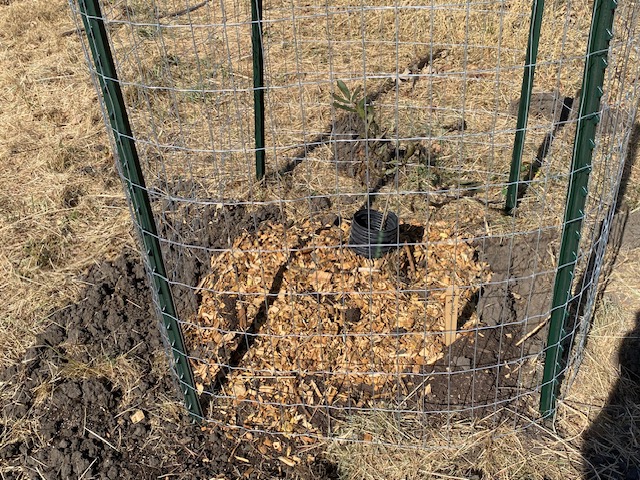
160 feet of swales dug
16 trees – apples, pears, chestnuts, pecans
20 shrubs – hazelnut, elderberry, blackberry, serviceberry
14 perennials – a few types of echinacea, comfrey, Black-Eyed Susan

I can do a similar project for you! See below to sign up for your FREE consult.

We can create an edible foodscape, a perennial paradise so you can grow more food and be more self sufficient. We use fruit and nut trees and perennial plants adapted to the Midwest to create a low maintenance food forest.
Start your journey to Thriving with a free 30 min consult, a discovery call to learn your vision and goals for your land. Sign up for a FREE consult and we can talk about your dream edible landscape!


